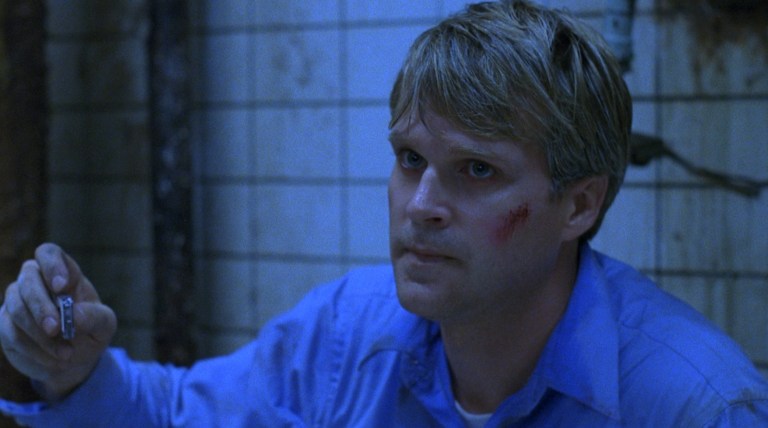Opinion: ‘Saw’ Is Not a Horror Movie
It’s actually a psychological thriller.

Twenty years ago, a now-iconic voice first said: “I want to play a game,” in James Wan’s Saw. No, it wasn’t Super Mario Bros. or Kingdom Hearts that Tobin Bell’s John Kramer wanted to play, but the kind of game where he puts unsuspecting people in death traps and performs his best Riddler impersonation to give them confusing clues on how to escape. Since the average person pushes a door that says “pull,” it’s no surprise that most people die during these activities because they struggle to follow instructions.

In the franchise, Kramer, aka the Jigsaw Killer, dies – though he sort of comes back through convenient flashbacks, prequels and interquels – but he inspires a whole troop of acolytes who believe a bear trap over someone’s face is a good way to have them repent their sins. Due to the gory nature and the gnarly deaths of the Saw movies, most people classify it as a horror. However, the original film is closer to a psychological thriller – in line with something like David Fincher’s Seven – and here’s why.
Why Saw is actually a psychological thriller
The core premise of the Saw series centers around the fact that people value life only when death appears close. After John Kramer received a terminal cancer diagnosis and survived a self-inflicted car crash, he decided to impart this lesson to the world. While his methods remain questionable, one cannot dispute that the message is good: People should live the best life possible because it can be gone in a heartbeat.
However, Kramer doesn’t pick up randoms off the street – no, he targets people whom he sees to be disrespecting their own life or the lives of others. To put it bluntly, he stalks people. Essentially, Kramer and his disciples play god and force people to confront their misdeeds in an effort to change their ways. While the traps push the body to the limit – they are meant to offer a chance of survival through some form of sacrifice and the resiliency of the human spirit.

Yes, seeing someone cut off their leg, or offer a pound of flesh, proves to be a gruesome sight; however, the connected question in all these movies is, why are these people in this predicament? In typical Saw fashion, there’s often a link between the trapped individuals and previous victims or even how they tie into the overall story. Each of the films offers a mystery to be solved, while they serve as pieces of a larger puzzle. The first movie sets this all up, though, posing the crucial question: Why is Jigsaw doing what he’s doing? It’s not like certain horror franchises where someone puts on a hockey mask or a mold of William Shatner’s face and murders people because they’re – checks notes – simply evil. There’s a purpose to what he does and it’s about finding out his motivations here.
James Wan says Saw was meant to be a psychological thriller
Rather than sit here and argue the semantics of Saw‘s genre classification, let’s let the filmmaker settle the argument himself? In a September 2024 interview with Esquire, James Wan explained why he loathed the fact so many people focused on the torture element of Saw. He said:
I found it really kind of lazy. Leigh [Whannell] and I took three years to write the script, to make this crafted thriller, but it seemed like everyone was focusing on the trap aspect of it.
Jason Blum – another one of Wan’s longtime collaborators – also said people took Saw the wrong way:
The original Saw was really a detective thriller that happened to have two elements you don’t see in a traditional detective thriller: a huge twist and a gruesome premise. Other studios looked at Saw and imitated its gruesomeness.
It’s remarkable how even after 20 years, people still look at the original Saw through the wrong lens. Put the traps to the side and take a look at the story to see what it’s really about.
Further reading:
